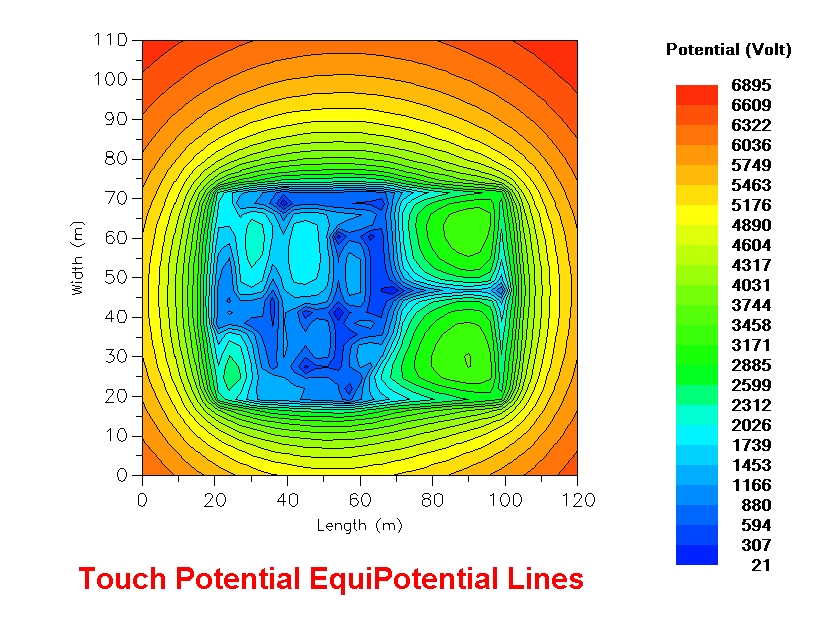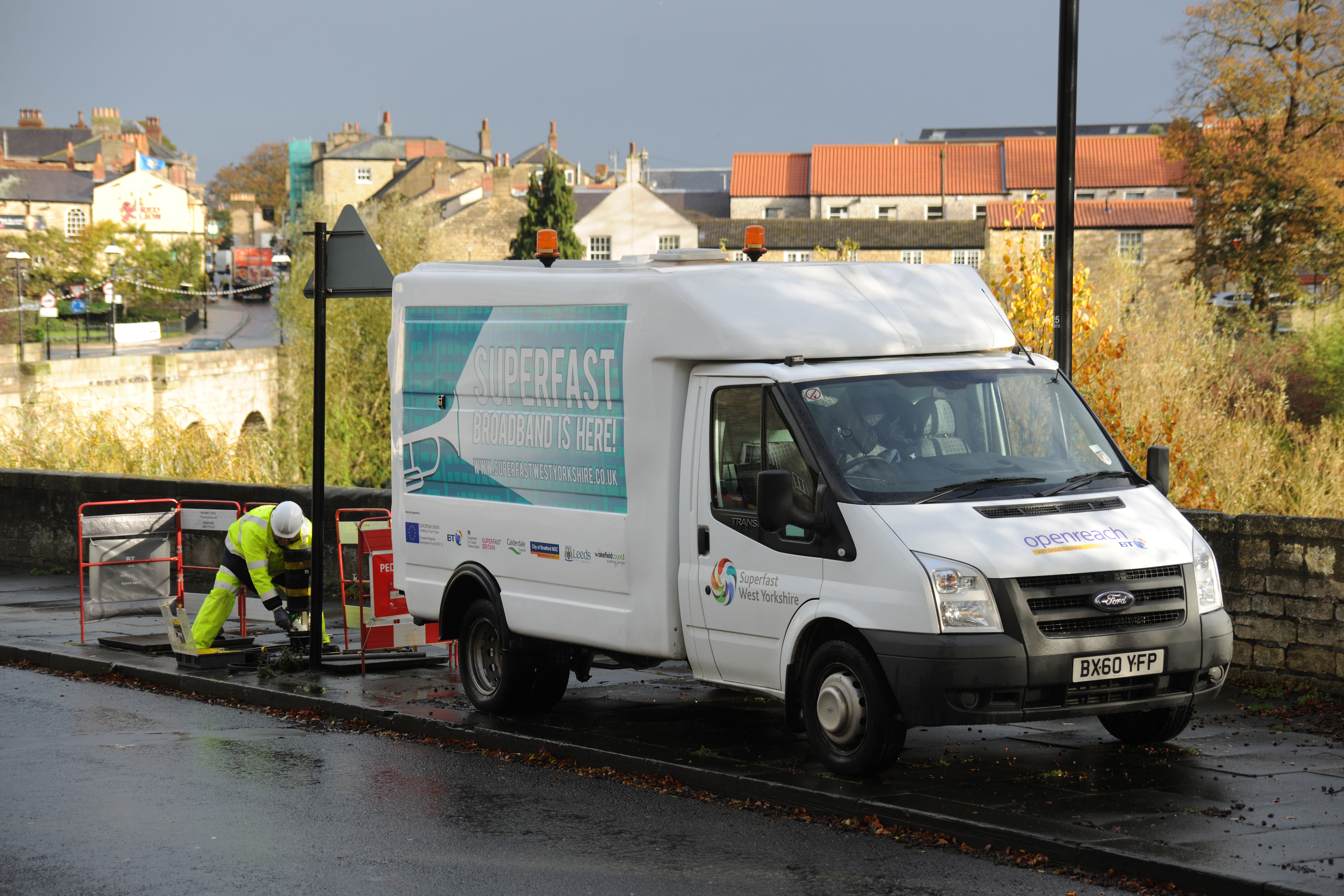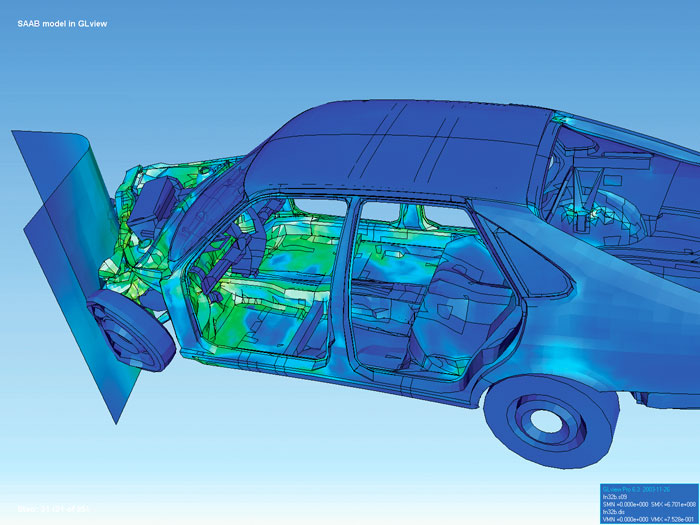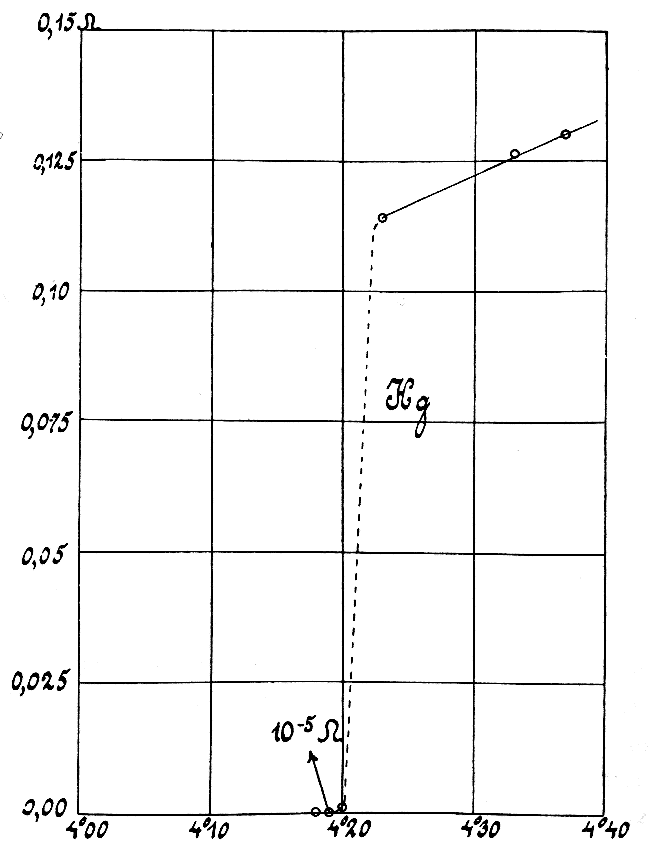|
Earth Potential Rise
In electrical engineering, earth potential rise (EPR), also called ground potential rise (GPR), occurs when a large current flows to earth through an earth grid impedance. The potential relative to a distant point on the Earth is highest at the point where current enters the ground, and declines with distance from the source. Ground potential rise is a concern in the design of electrical substations because the high potential may be a hazard to people or equipment. The change of voltage over distance (potential gradient) may be so high that a person could be injured due to the voltage developed between two feet, or between the ground on which the person is standing and a metal object. Any conducting object connected to the substation earth ground, such as telephone wires, rails, fences, or metallic piping, may also be energized at the ground potential in the substation. This transferred potential is a hazard to people and equipment outside the substation. Causes Earth potential ... [...More Info...] [...Related Items...] OR: [Wikipedia] [Google] [Baidu] |
Electrical Engineering
Electrical engineering is an engineering discipline concerned with the study, design, and application of equipment, devices, and systems that use electricity, electronics, and electromagnetism. It emerged as an identifiable occupation in the latter half of the 19th century after the commercialization of the electric telegraph, the telephone, and electrical power generation, distribution, and use. Electrical engineering is divided into a wide range of different fields, including computer engineering, systems engineering, power engineering, telecommunications, radio-frequency engineering, signal processing, instrumentation, photovoltaic cells, electronics, and optics and photonics. Many of these disciplines overlap with other engineering branches, spanning a huge number of specializations including hardware engineering, power electronics, Electromagnetism, electromagnetics and waves, microwave engineering, nanotechnology, electrochemistry, renewable energies, mechatronics/control ... [...More Info...] [...Related Items...] OR: [Wikipedia] [Google] [Baidu] |
Ampere
The ampere ( , ; symbol: A), often shortened to amp,SI supports only the use of symbols and deprecates the use of abbreviations for units. is the unit of electric current in the International System of Units (SI). One ampere is equal to 1 coulomb (C) moving past a point per second. It is named after French mathematician and physicist André-Marie Ampère (1775–1836), considered the father of electromagnetism along with Danish physicist Hans Christian Ørsted. As of the 2019 revision of the SI, the ampere is defined by fixing the elementary charge to be exactly , which means an ampere is an electric current equivalent to elementary charges moving every seconds, or approximately elementary charges moving in a second. Prior to the redefinition, the ampere was defined as the current passing through two parallel wires 1 metre apart that produces a magnetic force of newtons per metre. The earlier CGS system has two units of current, one structured similarly to the S ... [...More Info...] [...Related Items...] OR: [Wikipedia] [Google] [Baidu] |
Single-wire Earth Return
Single-wire earth return (SWER) or single-wire ground return is a single-wire transmission line which supplies single-phase electric power from an electrical grid to remote areas at lowest cost. The earth (or sometimes a body of water) is used as the return path for the current, to avoid the need for a second wire (or ''neutral wire'') to act as a return path. Single-wire earth return is principally used for rural electrification, but also finds use for larger isolated loads such as water pumps. It is also used for high-voltage direct current over submarine power cables. Electric single-phase railway traction, such as light rail, uses a very similar system. It uses resistors to earth to reduce hazards from rail voltages, but the primary return currents are through the rails. History Lloyd Mandeno, OBE (1888–1973) fully developed SWER in New Zealand around 1925 for rural electrification. Although he termed it "Earth Working Single Wire Line", it was often called "Mande ... [...More Info...] [...Related Items...] OR: [Wikipedia] [Google] [Baidu] |
Openreach
Openreach Limited is a company wholly owned by BT Group plc, that maintain telephone cables, ducts, cabinets and exchanges that connect nearly all homes and businesses in the United Kingdom to various national broadband and telephone networks. They were established in 2006 following an agreement between BT and the UK's telecoms regulator, Ofcom, to implement certain undertakings, pursuant to the Enterprise Act 2002, to ensure that rival telecom operators have equality of access to BT's local network. Openreach manages BT's local access network which connects customers to their local telephone exchange, starting at the main distribution frame (MDF) in the exchange and ending at the network termination point (NTP) at the end user's premises. Openreach also manages the connections between the MDF and the BT Wholesale/ local-loop unbundling (LLU) termination points located in the exchange, often referred to as jumper connections. In March 2017, after various negotiations with, ... [...More Info...] [...Related Items...] OR: [Wikipedia] [Google] [Baidu] |
Fault Current
In an electric power system, a fault is a defect that results in abnormality of electric current. A fault current is any abnormal electric current. For example, a short circuit in which a live wire touches a neutral or ground wire is a fault. An open-circuit fault occurs if a circuit is interrupted by a failure of a current-carrying wire (phase or neutral) or a blown fuse or circuit breaker. In a "ground fault" or "earth fault", current flows into the earth. In three-phase systems, a fault may involve one or more phases and ground, or may occur only between phases. In a polyphase system, a fault may affect all phases equally, which is a "symmetric fault". If only some phases are affected, the resulting "asymmetric fault" becomes more complicated to analyse. The analysis of these types of faults is often simplified by using methods such as symmetrical components. The prospective short-circuit current of a predictable fault can be calculated for most situations. In power systems, p ... [...More Info...] [...Related Items...] OR: [Wikipedia] [Google] [Baidu] |
Fiber Optic
An optical fiber, or optical fibre, is a flexible glass or plastic fiber that can transmit light from one end to the other. Such fibers find wide usage in fiber-optic communications, where they permit transmission over longer distances and at higher bandwidths (data transfer rates) than electrical cables. Fibers are used instead of metal wires because signals travel along them with less loss and are immune to electromagnetic interference. Fibers are also used for illumination and imaging, and are often wrapped in bundles so they may be used to carry light into, or images out of confined spaces, as in the case of a fiberscope. Specially designed fibers are also used for a variety of other applications, such as fiber optic sensors and fiber lasers. Glass optical fibers are typically made by drawing, while plastic fibers can be made either by drawing or by extrusion. Optical fibers typically include a core surrounded by a transparent cladding material with a lower index ... [...More Info...] [...Related Items...] OR: [Wikipedia] [Google] [Baidu] |
Transformer
In electrical engineering, a transformer is a passive component that transfers electrical energy from one electrical circuit to another circuit, or multiple Electrical network, circuits. A varying current in any coil of the transformer produces a varying magnetic flux in the transformer's core, which induces a varying electromotive force, electromotive force (EMF) across any other coils wound around the same core. Electrical energy can be transferred between separate coils without a metallic (conductive) connection between the two circuits. Faraday's law of induction, discovered in 1831, describes the induced voltage effect in any coil due to a changing magnetic flux encircled by the coil. Transformers are used to change Alternating current, AC voltage levels, such transformers being termed step-up or step-down type to increase or decrease voltage level, respectively. Transformers can also be used to provide galvanic isolation between circuits as well as to couple stages of signa ... [...More Info...] [...Related Items...] OR: [Wikipedia] [Google] [Baidu] |
National Electrical Code (US)
The National Electrical Code (NEC), or NFPA 70, is a regionally adoptable standard for the safe installation of electrical wiring and equipment in the United States. It is part of the National Fire Code series published by the National Fire Protection Association (NFPA), a private trade association. Despite the use of the term "national," it is not a federal law. It is typically adopted by states and municipalities in an effort to standardize their enforcement of safe electrical practices. In some cases, the NEC is amended, altered and may even be rejected in lieu of regional regulations as voted on by local governing bodies. The "authority having jurisdiction" inspects for compliance with the standards. The NEC should not be confused with the National Electrical Safety Code (NESC), published by the Institute of Electrical and Electronics Engineers (IEEE). The NESC is used for electric power and communication utility systems including overhead lines, underground lines, and pow ... [...More Info...] [...Related Items...] OR: [Wikipedia] [Google] [Baidu] |
Finite Element Method
Finite element method (FEM) is a popular method for numerically solving differential equations arising in engineering and mathematical modeling. Typical problem areas of interest include the traditional fields of structural analysis, heat transfer, fluid flow, mass transport, and electromagnetic potential. Computers are usually used to perform the calculations required. With high-speed supercomputers, better solutions can be achieved and are often required to solve the largest and most complex problems. FEM is a general numerical method for solving partial differential equations in two- or three-space variables (i.e., some boundary value problems). There are also studies about using FEM to solve high-dimensional problems. To solve a problem, FEM subdivides a large system into smaller, simpler parts called finite elements. This is achieved by a particular space discretization in the space dimensions, which is implemented by the construction of a mesh of the object: the numer ... [...More Info...] [...Related Items...] OR: [Wikipedia] [Google] [Baidu] |
Resistivity
Electrical resistivity (also called volume resistivity or specific electrical resistance) is a fundamental specific property of a material that measures its electrical resistance or how strongly it resists electric current. A low resistivity indicates a material that readily allows electric current. Resistivity is commonly represented by the Greek letter (rho). The SI unit of electrical resistivity is the ohm-metre (Ω⋅m). For example, if a solid cube of material has sheet contacts on two opposite faces, and the resistance between these contacts is , then the resistivity of the material is . Electrical conductivity (or specific conductance) is the reciprocal of electrical resistivity. It represents a material's ability to conduct electric current. It is commonly signified by the Greek letter (sigma), but (kappa) (especially in electrical engineering) and (gamma) are sometimes used. The SI unit of electrical conductivity is siemens per metre (S/m ... [...More Info...] [...Related Items...] OR: [Wikipedia] [Google] [Baidu] |
Electric Current
An electric current is a flow of charged particles, such as electrons or ions, moving through an electrical conductor or space. It is defined as the net rate of flow of electric charge through a surface. The moving particles are called charge carriers, which may be one of several types of particles, depending on the Electrical conductor, conductor. In electric circuits the charge carriers are often electrons moving through a wire. In semiconductors they can be electrons or Electron hole, holes. In an Electrolyte#Electrochemistry, electrolyte the charge carriers are ions, while in Plasma (physics), plasma, an Ionization, ionized gas, they are ions and electrons. In the International System of Units (SI), electric current is expressed in Unit of measurement, units of ampere (sometimes called an "amp", symbol A), which is equivalent to one coulomb per second. The ampere is an SI base unit and electric current is a ISQ base quantity, base quantity in the International System of Qua ... [...More Info...] [...Related Items...] OR: [Wikipedia] [Google] [Baidu] |
Volt
The volt (symbol: V) is the unit of electric potential, Voltage#Galvani potential vs. electrochemical potential, electric potential difference (voltage), and electromotive force in the International System of Units, International System of Units (SI). Definition One volt is defined as the electric potential between two points of a electrical conductor, conducting wire when an electric current of one ampere dissipates one watt of power (physics), power between those points. It can be expressed in terms of SI base units (metre, m, kilogram, kg, second, s, and ampere, A) as : \text = \frac = \frac = \frac = \text\text^2\text^. Equivalently, it is the potential difference between two points that will impart one joule of energy per coulomb of charge that passes through it. It can be expressed in terms of SI base units (metre, m, kilogram, kg, second, s, and ampere, A) as : \text = \frac = \frac = \frac = \text\text^2\text^. It can also be expressed as amperes times ohms (curre ... [...More Info...] [...Related Items...] OR: [Wikipedia] [Google] [Baidu] |






